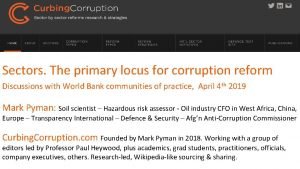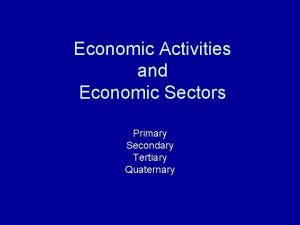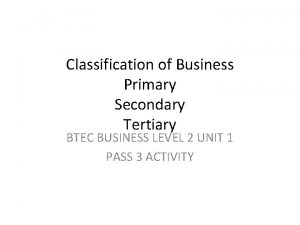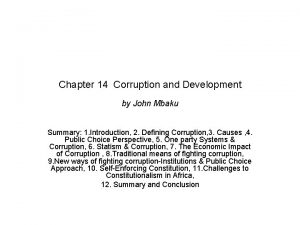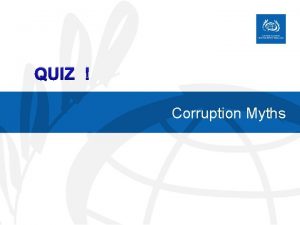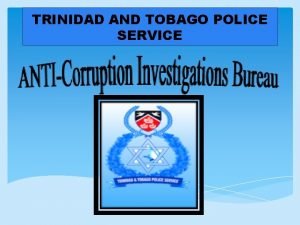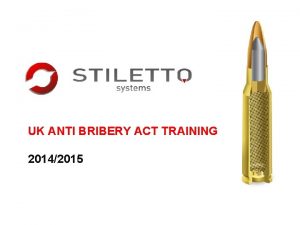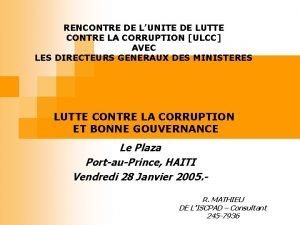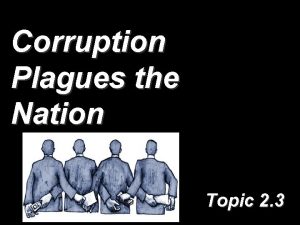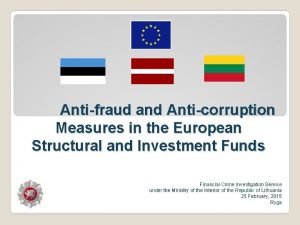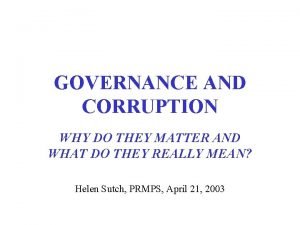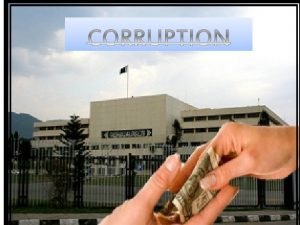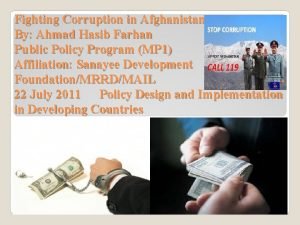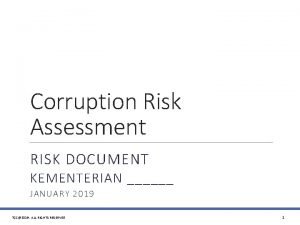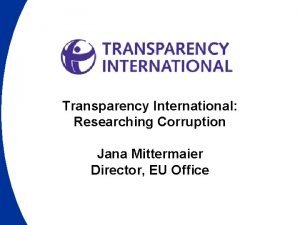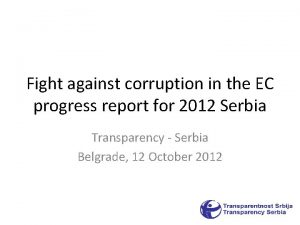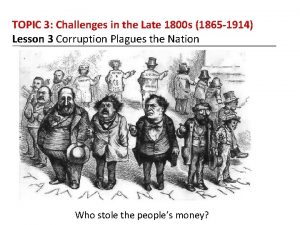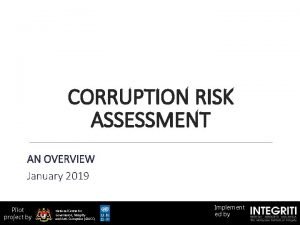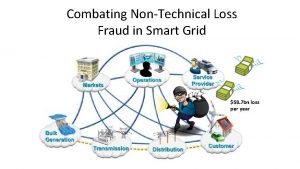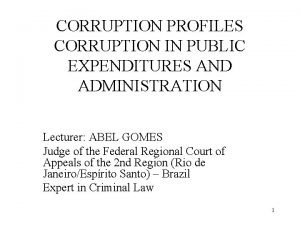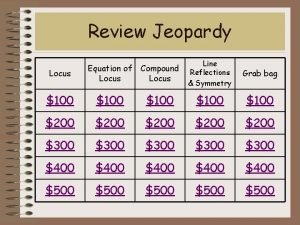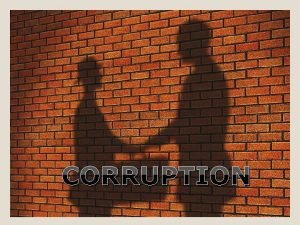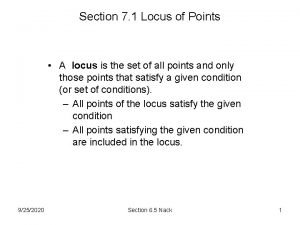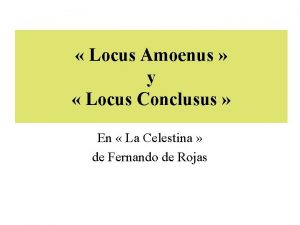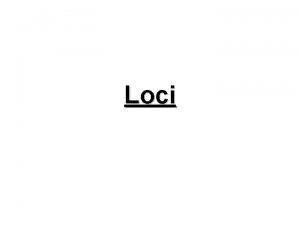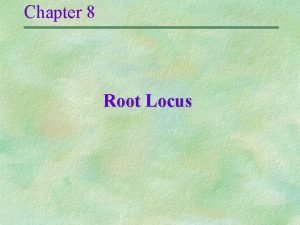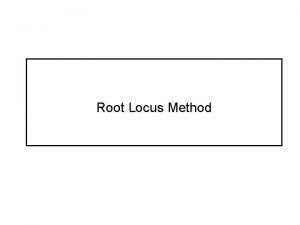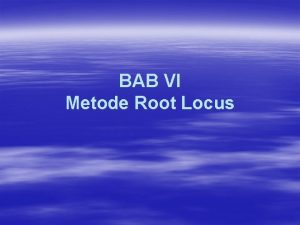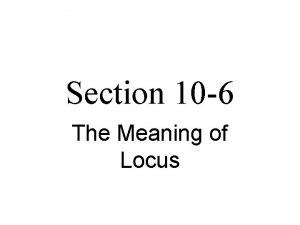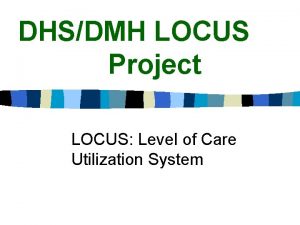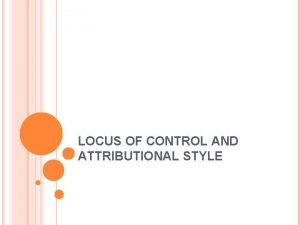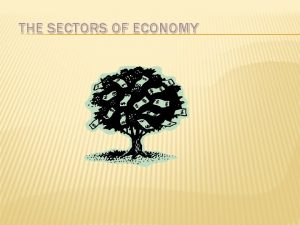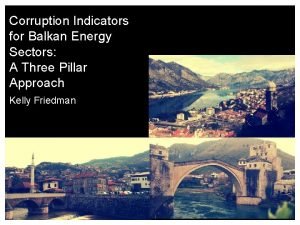Sectors The primary locus for corruption reform Discussions
































- Slides: 32

Sectors. The primary locus for corruption reform Discussions with World Bank communities of practice, April 4 th 2019 Mark Pyman: Soil scientist – Hazardous risk assessor - Oil industry CFO in West Africa, China, Europe – Transparency International – Defence & Security – Afg’n Anti-Corruption Commissioner Curbing. Corruption. com Founded by Mark Pyman in 2018. Working with a group of editors led by Professor Paul Heywood, plus academics, grad students, practitioners, officials, company executives, others. Research-led, Wikipedia-like sourcing & sharing.

Earlier efforts. . Now, many voices for a fresh approach. .

A five-layer approach 1. Disaggregate corruption in the sector into 20 -40 specific issues. Enables specific reform proposals; such reforms can be integrated in sector operation; enables conversation with Ministry leadership on political feasibility; provides a template usable across almost all countries 2. Take a total approach to the sector, not small pieces. Sectors are where the ‘rules of the game’ are set and can be contested. This enables demanding input from the private sector. Because a total view gets political attention. Because this fuels multilateral discussions and advances 3. Take a problem-solving focus not a problem focus. You can spell out repertoires of reform approaches & reform strategies in each sector. You can use the ‘language’ of the professionals in that sector. There is ownership and pride in sectors. Progress examples exist but are rarely written up. 4. Establish robust semi-quantitative analyses of the corruption vulnerabilities. In the sector in each country, do comparisons/ranking across countries; do analyses and comparisons of the companies in the sector. Builds the base for measuring progress. Builds pressure. 5. Establish corruption reform ecosystems for each sector. Corruption reform integrated in sectors + international collaboration + expertise groups + pressure groups

The website

Sectors • Common language: Each sector’s language is different from others. Each is an ‘epistemic community’, with common vocabulary, conceptual ideas, sets of incentives • Domain context: The solutions are usually sector-specific. Even where the corruption mode is similar across sectors, like favoritism, the solutions differ • Political context is not nationally homogenous: usually differs markedly between sectors. • Incentives: Understanding and changing the ‘rules of the game’ happens within sectors • Pride, ownership & line management: Only within professions can you build ownership of the problems & solutions among the professionals in that sector • National AND international: If so, this can be better approached within the sector, not nationally • Sector differences often greater than country differences: Corruption differences are often larger between sectors within a country than between countries

Sectors Differences in meritocracy in-country Hungary: Are promotions in your Ministry on a meritocratic basis?

Sectors Ministries Functions & structures of national life Professions Areas of activity where the government has policy goals Agriculture Borders/Customs Construction & Public Works Defence & military Education Electoral & political institutions Electricity & power Environment Fisheries Forestry Health Higher Education Humanitarian assistance Land Local government heritage Transport Media Water Mining Oil & Gas Wildlife/ Policing conservation Prisons Professional services Property Cross-cutting sectors Public financial management & tax Banking & finance Religious affairs Civil service Shipping Judiciary and courts Sport Public procurement State-owned enterprises Telecommunications Tourism, culture &

Sectors … where Public + Private do the real work together • The contemporary state has deep private sector involvement throughout government. Integration of contractors, outsourcing of support roles, complete privatization of previously government tasks…. • The boundaries are movable, often hotly contested. Sector approach makes the forces involved more visible and challengeable • Conflicts of interest are pervasive. Choosing to be generous to badly performing companies, to ignore preferences being awarded or choosing to ignore violation, players with multiple undisclosed roles • Example: ‘revolving door’ problems in the mining industry. A government inspector in Australia. He sees his future career as working for one of the mining companies. As a result: “My job is to be a free consultant to the industry” while I am in Government. • Yet the private sector is essential for reform, despite the downsides. Within sectors you know the players, fight with them, work with them, regulate them, command their engagement. Furthermore, there always reformers, both public and private.

Corruption types To take action – whether to improve system design or to improve operation - we must disaggregate the corruption types Not other general phenomena like bribery, nepotism, collusion. But specific issues Disaggregation into 20 -40 specific corruption types seems about right This is enough to cover all the main corruption types in that sector, and be applicable across a wide range of countries Such a typology gets us away from binary distinctions - Grand/petty, need/greed, political/ bureaucratic, institutional/individual. All types are present.

Corruption types in Health

Corruption types in School Education

Corruption types in Defence

Corruption types in Policing

Corruption types in Land

Corruption types – Electricity and power Power generation Corruption types in Power 1. Improper estimation of capacity addition needs 2. Improper allocation of licenses/contracts 3. Insider-influenced procurement strategies 4. Improper construction contracting 4. Improperly low cost long term financing and/or capture of any state financing corporation 5. Improper behaviours at project formulation stage 6. Improper behaviours at project implementation stage 7. Improper behaviours at plant operations (Gulati and Rao 2006 WB slides) 9. Improper energy pricing agreements 10. Improper subsidies 11. Manipulated selection of regulators Politics and broad public policy 1. Improper balancing of competing interests of customers and investors 28/01/2019 17: 41 Power transmission and distribution 1. Improper allocation by the Electricity Boards 2. Theft of power via Illegal connections and Improper tapping of power of transmission and distribution lines 3. Resistance to paying for electricity 4. Improper non billing/under-billing or non payment by/to the distribution companies 6. Favouritism in appointments/ transfers/ sanctions 7. Billing at a low rate 8. Partial or complete diversion of load from the visibility of the metering system (SDN Nigeria 2018 p 4) 9. Improper charging for fixing faulty lines & transformers Independent Regulatory Agency. 1. Compromised/collusion of members (Imam 2018) 2. 5. Improper rulings/policies from the electricity regulator Electricity supply - Domestic 1. 2. 3. 4. 5. 6. 7. Improper Non payment of bills Illegal connections to the grid Under and Overcharging Improper meter reading (bypassing; tampering) Improper payments for power connection Improper payments for repair/restoration/meter installation Illegal contractors connecting consumers to the grid

Corruption types and political feasibility Centre the discussion around the detailed corruption types • Relative magnitude of each corruption type • Political priority & feasibility • Economic, social priority & feasibility • Technical priority & feasibility Ø Relative ‘priority’ of each type for the initiative, taking into account political and technical feasibility With a full typology, you can directly engage your leadership, stakeholders and citizens in assessing priority & feasibility

Corruption types Engaging people on the corruption priorities Botswana top military leadership (30 people)

Corruption types Engaging people on the corruption priorities Botswana military top leadership (30 people)

Corruption types Engaging people on the corruption priorities Asian country military mid-rank leadership (100 people)

Reform approaches There is a limited, definable range of reform approaches. Eight seems to be sufficient. The reforms within each approach are largely sector-specific Reform experience is always sector specific

Reform measures e. g. Functional reforms In the Defence sector 9 types of functional reform. Example of showing the status of defence budgeting in Burundi via the number of budget lines & headings; comparison between 4 Ministries, police and military.

Reform measures e. g. Monitoring reforms In the Shipping sector Maersk working with captains and ports to eliminate whisky and cigarette gifts. Graph shows shipboard/global IT system recording all such gifts

Reform measures But… Why are there so few accounts of progress in corruption reform? Because there aren’t any? Practitioners don’t write on progress. Nor do academics. Researchers have to dig hard to unearth written accounts of progress against corruption. Multiple incentives not to write up the stories: • Progress is always partial, political, fragile • We always look upwards, to ‘better’ nations. So we always fall short, always seem to fail • Partial success is easily criticized and dismissed • It’s politically correct to shout about the corruption, not cool to write about progress • Sector professionals prefer not to risk funding by being explicit, whether progress or failure Curbing. Corruption. com seeks to address this by bringing together positive experience and positive strategies, sector by sector.

Strategies There is limited articulation of strategies – Feasible combinations of reform measures, political calculation, champions, timeframes, collaborations, entry points, etc We can achieve more by doing strategies within sectors; and with a limited repertoire of strategy types Example – Different Health sector strategies Narrow focus 1: Bribery in surgery wait lists Narrow focus 2: Reducing Doctors’ power Narrow focus 3: Contract out primary care Broad focus: Full Ministry initiative Integrity focus: Ask doctors to lead reform External focus: Empower the patient groups Discipline focus: Move offending doctors to low-status positions

Int’l initiatives We have some transnational sector initiatives: Education: Water: Policing: Fisheries: Defence: Construction: Health: Extractives: IIEP-UNESCO, Accnt’blty Lab WIN, OECD-WGI DCAF, Michigan Uni, Aus Uni Fi. TI, UNODC, Fish. Crime TI-DS, NATO, CIDS, UKDA GIACC, COST, OECD U 4, META EITI These have some positives: Global sector initiatives & Ministerial gatherings can press for change at the international level The secretariat can develop deep sector expertise. National public officials can utilize the experts & the sector knowledge They can show progress, usually by taking up single issues.

BUT …. 大声的雷声,但是小小的雨滴 Loud thunder, tiny raindrops Ø Reform ecosystems are needed in each sector Integration of corruption reform INTO the sector + 1 International/ Ministerial/ Multi-stakeholder • Usually tiny, narrow scope, single issue • They operate outside the usual operating framework of the Ministry + 5 Sector corruption & reform expertise centres Or… they are unrealistically grand multisector visions + many progress-monitoring entities + 5 Sector-specific, sector-wide NGOs + 1 Vulnerability assessments & rankings

Semi-q sector assessments are the next layer Deep knowledge Applies pressure On both governments and the companies in the sector 27

Ghana Defence sector National result

Ghana Defence sector Methodology of sector vulnerability assessment Example of Scores on (some) individual questions. Each question scores 0 -4 depending on expert assessment plus 3 peer reviewers plus government response See example of individual question (No. 50 of 77) and assessment on next slide


Strategically addressing corruption reform in the sector • Integrating a-c into sectors: Provides a clear framework within which you can mainstream anti -corruption in large organisations. In the aid organisations this integrates anti-corruption elements into the functional design and line management operation in that sector, not as something other. • Sector reform ecosystems: Provides a clear framework within which you can work with others on the overall approach and ecosystem for corruption reform in that sector • Nurture independent sector centre, whether NGO, think-tank or academic, will probably take 10 yrs to reach critical mass • International sector ‘plan’: The sector focus means it can be part of a ‘real’ plan, that includes the industry associations, professional associations and companies in that sector as a long term part of the solution • National anti-corruption plans become assemblies of sector plans plus overarching organisation, coordination and monitoring, and nation-wide elements

Thank you Do you agree? Do contribute material – Do share Do visit the website - Do be in touch www. curbingcorruption. com Mark. Pyman@curbingcorruption. com Paul. Heywood@curbingcorruption. com
 Locus of corruption
Locus of corruption Secondary economic activities
Secondary economic activities Tertiary business examples
Tertiary business examples Speaking and listening: effective group discussions
Speaking and listening: effective group discussions Classroom discussions in math
Classroom discussions in math 5 practices for orchestrating mathematical discussions
5 practices for orchestrating mathematical discussions Introduction of corruption
Introduction of corruption Corruption quiz
Corruption quiz Trinidad corruption
Trinidad corruption Uk bribery act training slides
Uk bribery act training slides Fraud and corruption analaytics
Fraud and corruption analaytics Corruption causes
Corruption causes Important quotes in the great gatsby
Important quotes in the great gatsby Corruption conclusion
Corruption conclusion Corruption plagues the nation
Corruption plagues the nation Anti-corruption efforts
Anti-corruption efforts Macbeth corruption
Macbeth corruption Corruption
Corruption What are the characteristics of corruption
What are the characteristics of corruption Conclusion and recommendation of corruption
Conclusion and recommendation of corruption Corruption risk assessment
Corruption risk assessment Jana mittermaier
Jana mittermaier Corruption in the catholic church
Corruption in the catholic church What themes are in the great gatsby
What themes are in the great gatsby Corruption
Corruption Lesson 3 corruption plagues the nation
Lesson 3 corruption plagues the nation Car accident great gatsby chapter 3
Car accident great gatsby chapter 3 Corruption essay conclusion
Corruption essay conclusion Corruption risk assessment
Corruption risk assessment Ddo combating corruption
Ddo combating corruption Summary of chapter 3 in the great gatsby
Summary of chapter 3 in the great gatsby Corruption
Corruption Why do the tribunes chase the commoners away
Why do the tribunes chase the commoners away
